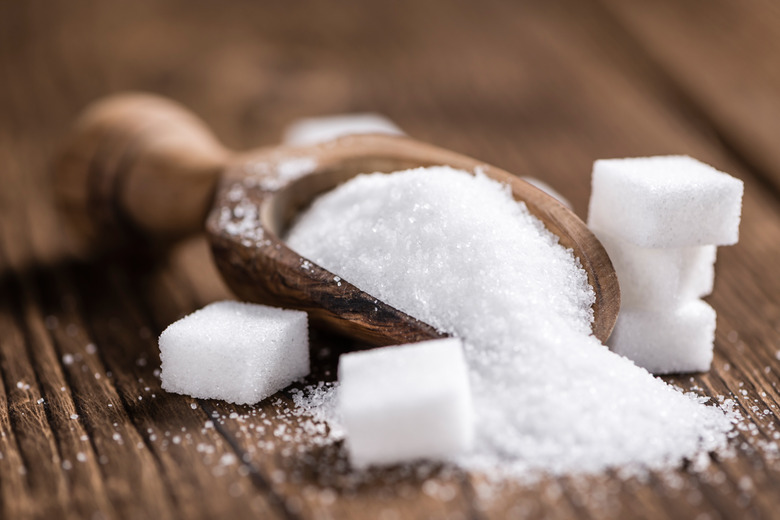Test For Reducing Sugars
A wide variety of sugars exist in nature and have different chemical and biological properties. A reducing sugar is one that contains, or can form, an aldehyde or ketone and that can act as a reducing agent. The chemical properties of reducing sugars play a role in diabetes and other ailments and are also important constituents of some foods. There are several tests to qualitatively or quantitatively identify the presence of reducing sugars.
TL;DR (Too Long; Didn't Read)
Benedict's test and Fehling's test are two common tests for reducing sugars.
What is a reducing sugar?
What is a reducing sugar?
Any sugar that forms an aldehyde or ketone in the presence of an alkaline solution is a reducing sugar. Types of reducing sugars include:
- glucose
- fructose
- glyceraldehyde
- lactose
- arabinose
- maltose
Sucroses and trehaloses are not reducing sugars. Ultimately, a reducing sugar is a type of sugar that reduces certain chemicals through an oxidation reaction.
Benedict's Test
Benedict's Test
To test for the presence of reducing sugars, a food sample is dissolved in boiling water. Next, a small amount of Benedict's reagent is added and the solution begins to cool. During the next four to 10 minutes, the solution should begin to change colors. If the color changes to blue, then no glucose is present. If a high amount of glucose is present, then the color change will progress to green, yellow, orange, red and then a dark red or brown.
How Benedit's Test Works
How Benedit's Test Works
Benedict's reagent is made from anhydrous sodium carbonate, sodium citrate and copper(II) sulfate pentahydrate. Once added to the test solution, reducing sugars reduce the blue copper sulphate from the Benedict's solution to a red brown copper sulphide, which is seen as the precipitate and is responsible for the color change. Non-reducing sugars cannot do this. This particular test only provides a qualitative understanding of the presence of reducing sugars.
Fehling's Test
Fehling's Test
To carry out Fehling's test, the solution is diluted in water and warmed until fully dissolved. Next, Fehling's solution is added while stirring. If reducing sugars are present, the solution should begin to change colors as a rust or red colored precipitate forms. If reducing sugars are not present, the solution will remain blue or green.
How Fehling's Test Works
How Fehling's Test Works
Fehling's solution is made by first making two sub-solutions. Solution A is made from copper(II) sulfate pentahydrate dissolved in water and solution B contains potassium sodium tartrate tetrahydrate (Rochelle salt) and sodium hydroxide in water. The two solutions are added together in equal parts to make the final test solution. The test is a detection method for monosaccharides, specifically aldoses and ketoses. These are detected when aldehyde oxidizes to acid and forms a cuprous oxide. Upon contact with an aldehyde group, it is reduced to cuprous ion, which forms the red precipitate and inedicates the presence of reducing sugars.
Practical applications
Practical applications
Reducing sugar tests such as Benedict's and Fehling's test can be used to determine whether sugars are present in urine, which can be indicative of diabetes mellitus. They can also be used in a qualitative manner, such as in a titration experiment, to determine the amount of reducing sugars in a solution.
References
Cite This Article
MLA
Kelly, Melissa. "Test For Reducing Sugars" sciencing.com, https://www.sciencing.com/test-reducing-sugars-5529759/. 25 April 2018.
APA
Kelly, Melissa. (2018, April 25). Test For Reducing Sugars. sciencing.com. Retrieved from https://www.sciencing.com/test-reducing-sugars-5529759/
Chicago
Kelly, Melissa. Test For Reducing Sugars last modified March 24, 2022. https://www.sciencing.com/test-reducing-sugars-5529759/
